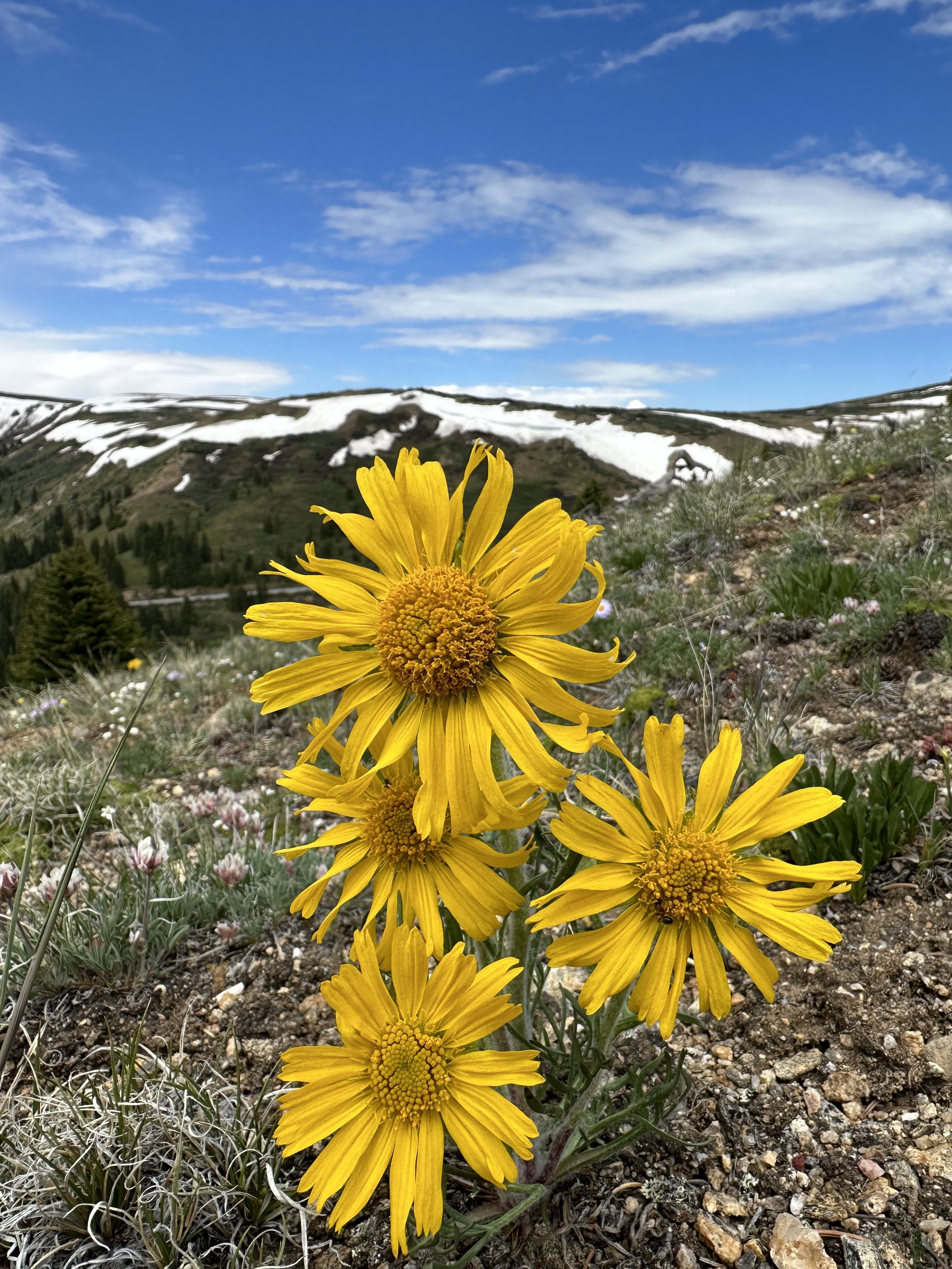Common & scientific name
Showy locoweed, Oxytropis splendens
Family
Pea, Fabaceae
Location
Interlaken/Twin Lakes, 9,100’
Fun, weird, helpful, or little known fact
Showy, indeed! Covered in long, white hairs, the plant takes on a silvery appearance, which contrasts with its numerous, richly colored flowers, ranging from dark purple to lavender, that sit atop tall, leafless stems that grow in large clusters.
When I first encountered this flower, I thought it might be a cultivated Oxytrope that had been planted and escaped back in the Hotel Interlaken days, as I had NEVER seen a wildflower in our area quite as large and dramatic as this. Alas, it IS a native, one you won’t see on the west side of the Pass, and worth a trip all by itself to the south side of Twin Lakes (you can also see it up South Fork Lake Creek meadows and alongside Highway 82!





































